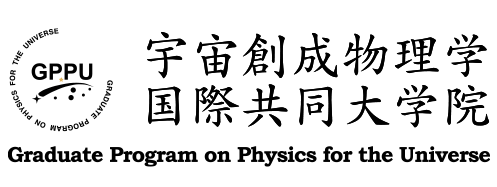GPPU Seminar
1) Investigation of dust submillimeter excess emission considering mesoscopic properties of cosmic very small dust grains
2) Star formation activity at the peak epoch of galaxy formation probed by deep narrow-band imaging
3) Environmental Impact on Galaxy Morphology and Star Formation
1) Kenji Amazaki; 2) Kazuki Daikuhara; 3) Ronaldo Laishram
(Tohoku University)
Date
10:00-12:30, February 28th, 2024Place
(hybrid) Room 743, Science Complex B (H-03), Zoom registration mapAbstract
1) Dust excess emission in the submillimeter wavelength has been observed in some nearby galaxies. However, the origin of this emission remains unclear.We propose that the cosmic very small dust grains (VSGs) are the origin of the submillimeter excess. We have examined the dust thermal emission taking into account the fact that VSGs consist of 100 to 10,000 atoms and are intrinsically mesoscopic-scale materials. For mesoscopic-scale materials, models describing the physical properties of bulk materials cannot be used. In this study, the surface effect on grainsʼ cohesive energy, the effects of irregular shapes and the randomness of the shape distribution on thermal characteristics of free electrons were modeled and taken into the dust emission model for the first time. The effects of the finiteness of the 1st excitation energy of vibrational modes, the small energy content of VSGs, and the fact that grains cannot radiate photons with energy exceeding their internal energy were also taken into account. We demonstrated the SED of thermal emission from VSGs with the above models. Our model predicts VSGs emit excess emission in the submillimeter wavelength along with the known emission in the mid-infrared. We will discuss a comparison between our model and the observation.
2) Low-mass galaxies at high redshifts are the building blocks of more massive galaxies at later times and are thus key populations for understanding galaxy formation and evolution. We have made deep narrow-band observations for two protoclusters and the general field in COSMOS at z~2. We find low-mass galaxies in a protocluster at z~2 show enhanced star-formation activity, deviating from the main sequence, indicating environmental effects. Moreover, within protocluster galaxies, star-forming activity is more centrally concentrated. This is probably due to the enhanced interactions between galaxies in protoclusters at cosmic noon, which can lose the angular momentum of the gas, drive it towards the galaxy center, and lead to a central starburst. We also investigate a young protocluster HS1700 at z~2 with a different structure from two protoclusters to reveal the relationship between the structure and star-formation activity. This seminar will introduce the current understanding of star-forming activity at the peak of galaxy formation, combining this latest result with previous results.
3) In this study, we examine the environmental effects on star-forming galaxies within the hierarchical assembly of large-scale structures, utilizing a novel method for accurate redshift estimation through dual narrow-band filter emission line flux ratios. We assess star-forming activity and the spatial distribution of Hα and continuum emission at z=0.4, probing the 3-D cosmic web with HSC triple narrow-band imaging. Our analysis extends to z∼1.5, where deep Subaru HSC-SSP and JWST NIRCAM imaging reveals a significant filamentary overdensity of star-forming galaxies. We explore morphological disturbances and merger signs in relation to the environment. Heightened star-forming activity was found in dense regions, suggesting an environmental impact on early galaxy evolution. Future studies will further explore the chemical abundances, gas content, and kinematics of these galaxies to understand the underlying processes in this overdense structure.
Point
GSP 1Contact: Yusuke Tanimura (tanimura [at] nucl.phys.tohoku.ac.jp)
